Life in Desert Regions- Sahara and Ladakh
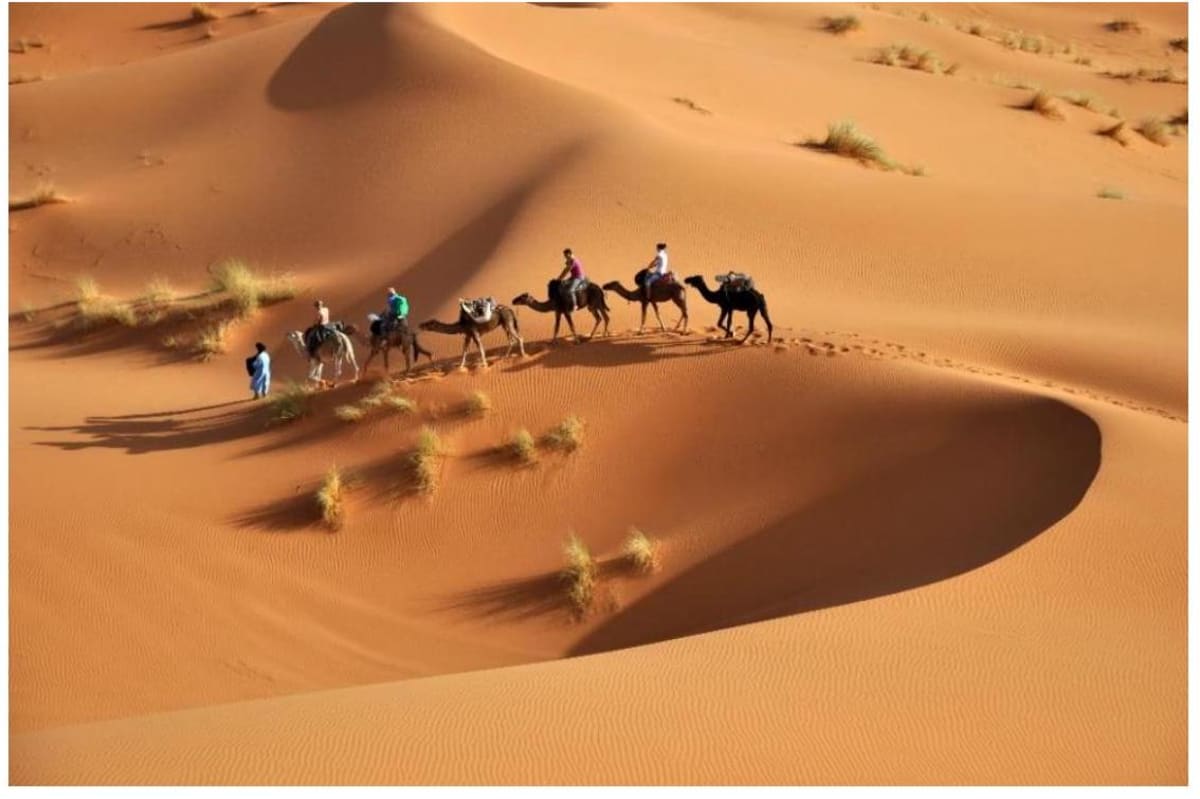
"The word 'desert' conjures up in our mind miles and miles of hot sand, cactus and date palms and camels. This may be true for hot deserts but there are cold deserts too where the ground is covered with snow and the climate is severely cold."
1.0Introduction
- We have seen that water means life to plants, animals and people.
- It is difficult for anyone to live in places where there is no water to drink, where there is no grass for their cattle to feed on and where there is no water to help the crops to grow.
- We will now learn about the places in the world where people have learned to cope with extreme harsh temperatures; in some places as hot as fire and some as cold as ice.
- These are the desert areas of the world.
- These are characterised by low rainfall, scanty vegetation and extreme temperatures.
- Depending on the temperatures there can be hot deserts or cold deserts.
- The people inhabit these lands wherever little water is available to practise agriculture.
2.0The Hot Desert - Sahara
- Look at the map of the world and the continent of Africa.
- Locate the Sahara desert covering a large part of North Africa. It is the world's largest desert.
- It has an area of around 8.54 million sq. km.
- The Sahara desert touches eleven countries.
- These are Algeria, Chad, Egypt, Libya, Mali, Mauritania, Morocco, Niger, Sudan, Tunisia and Western Sahara.
- When you think of a desert the picture that immediately comes to your mind is that of sand.
- But besides the vast stretches of sands, that Sahara desert is covered with, there are also gravel plains and elevated plateaus with bare rocky surface.
- These rocky surfaces may be more than 2500 m high at some places.
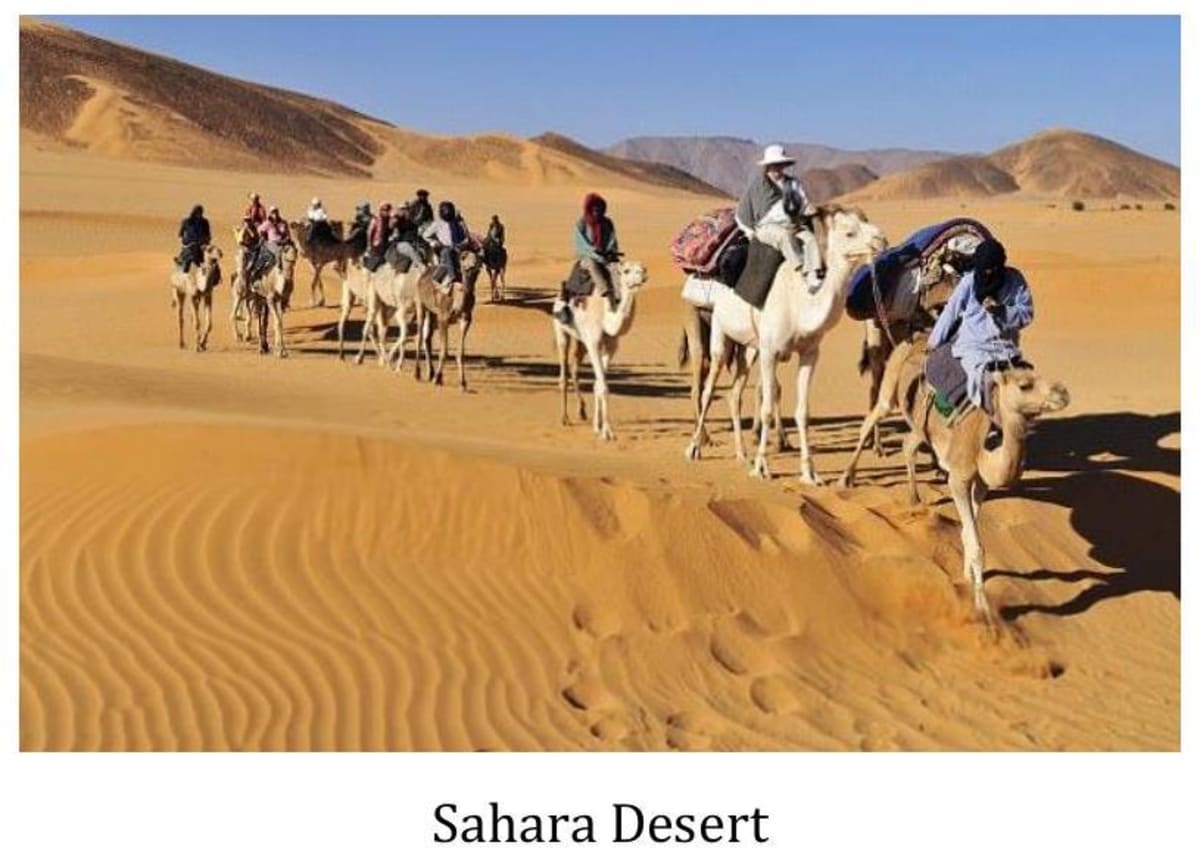
Climate
- The climate of the Sahara desert is scorching hot and parch dry.
- It has a short rainy season.
- The sky is cloudless and clear.
- Here, the moisture evaporates faster than it accumulates. Days are unbelievably hot.
- The temperatures during the day may soar as high as , heating up the sand and the bare rocks, which in turn radiates heat making everything around hot.
- The nights may be freezing cold with temperatures nearing zero degrees.
Flora and Fauna
- Vegetation in the Sahara desert includes cactus, date palms and acacia.
- In some places there are oasis - green islands with date palms surrounding them.
- Camels, hyenas, jackals, foxes, scorpions, many varieties of snakes and lizards are the prominent animal species living there.
Cactus
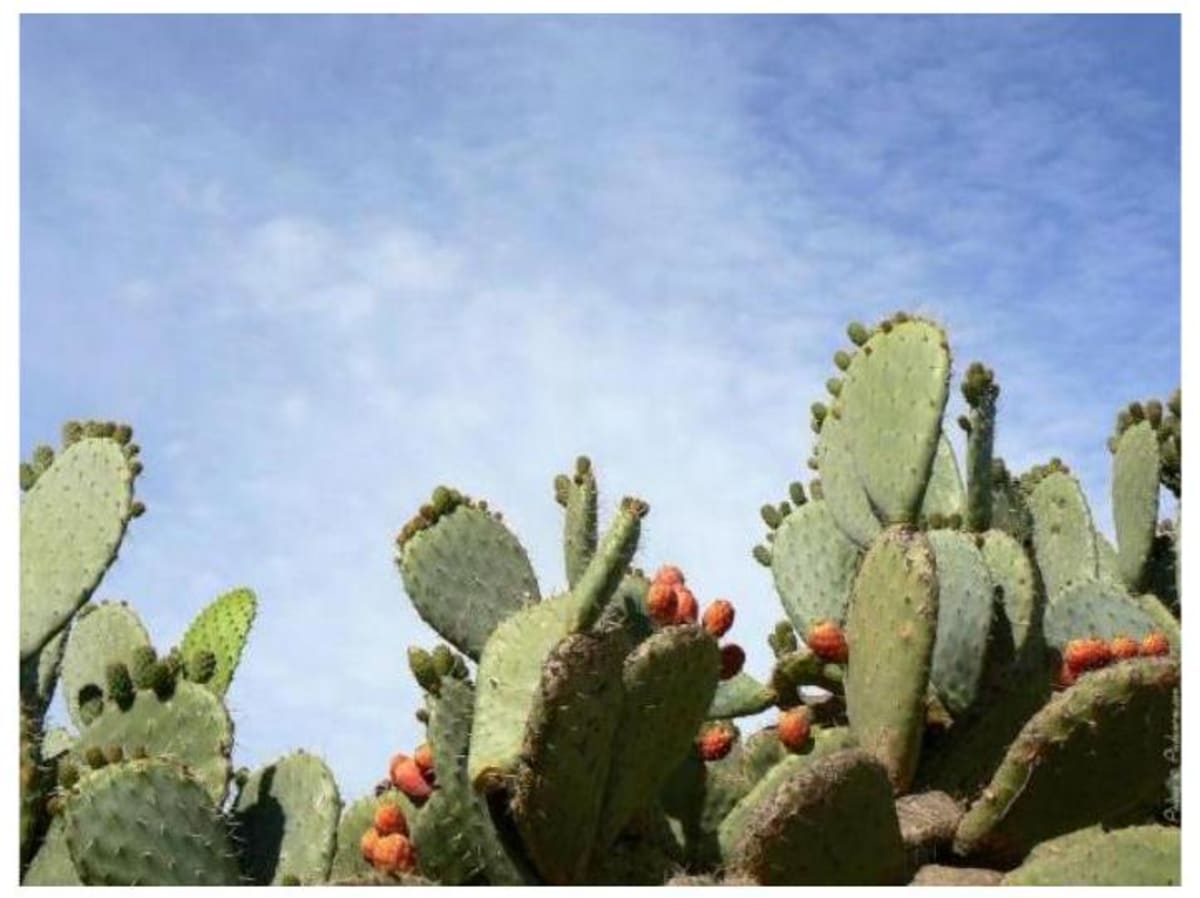
People
- The Sahara desert despite its harsh climate has been inhabited by various groups of people, who pursue different activities.
- Among them are the Bedouins and Tuaregs.
- These groups are nomadic tribes rearing livestock such as goats, sheep, camels and horses.
- These animals provide them with milk, hides from which they make leather for belts, slippers, water bottles; hair is used for mats, carpets, clothes and blankets.
- They wear heavy robes as protection against dust storms and hot winds.
- The oasis in the Sahara and the Nile Valley in Egypt supports settled population.
- Since water is available, the people grow date palms.
- Crops such as rice, wheat, barley and beans are also grown.
- Egyptian cotton, famous worldwide is grown in Egypt.
Sahara in Africa
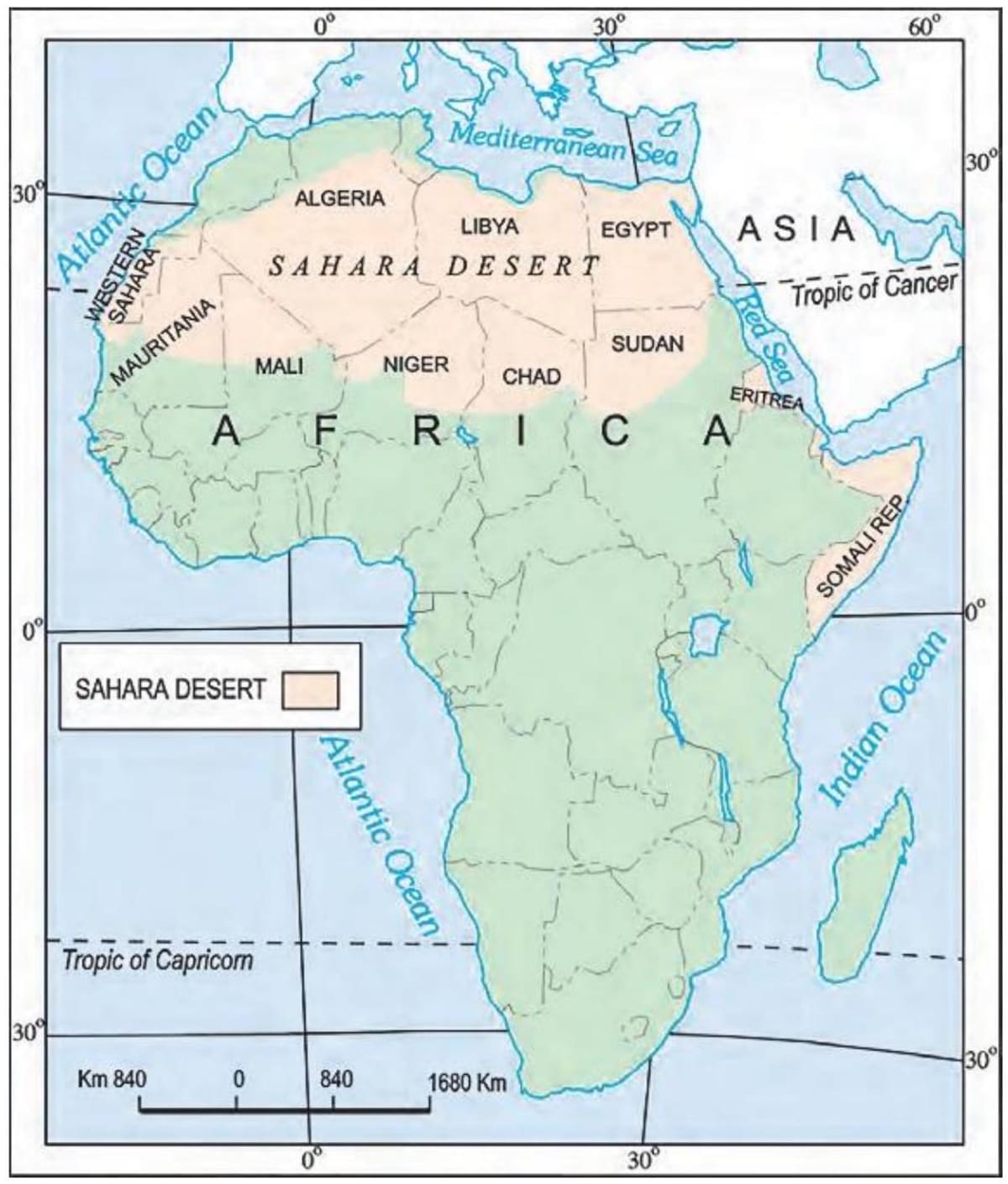
- The discovery of oil - a product in great demand throughout the world, in Algeria, Libya and Egypt is constantly transforming the Sahara desert.
- Other minerals of importance that are found in the area include iron, phosphorus, manganese and uranium.
- The cultural landscape of the Sahara is undergoing change.
- Gleaming glass cased office buildings tower over mosques and superhighways crisscross the ancient camel paths.
- Trucks are replacing camels in the salt trade.
- Tuaregs are seen acting as guides to foreign tourists.
- More and more nomadic herdsmen are taking to city life finding jobs in oil and gas operations.
3.0The Cold Desert - Ladakh
- Ladakh is a cold desert lying in the Great Himalayas, on the eastern side of Jammu and Kashmir.
- The Karakoram Range in the north and the Zanskar mountains in the south enclose it.
- Several rivers flow through Ladakh, Indus being the most important among them.
- The rivers form deep valleys and gorges.
- Several glaciers are found in Ladakh, for example the Gangri glacier.
Zanskar mountains
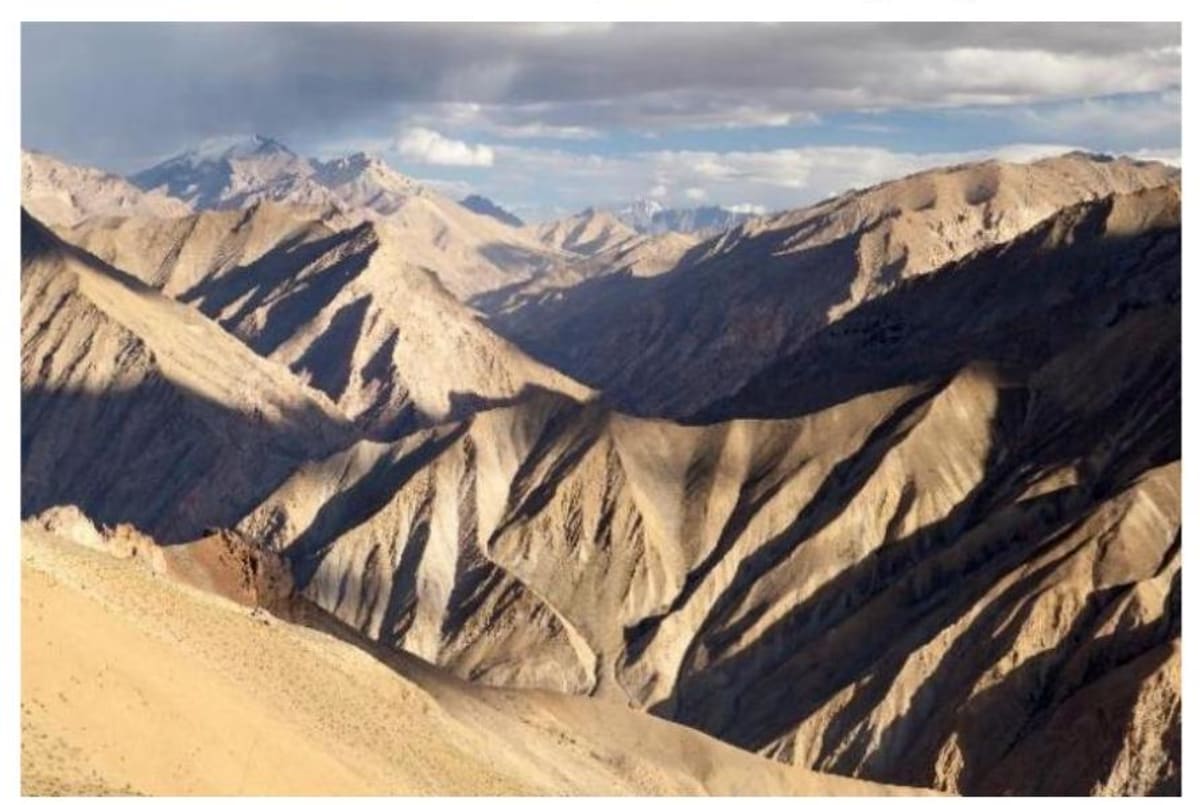
Word Origin Ladakh is made up of two words - "La" meaning 'mountain pass' and "Dak" meaning 'country'
- The altitude in Ladakh varies from about 3000 m in Kargil to more than in the Karakoram.
- Due to its high altitude, the climate is extremely cold and dry.
- The air at this altitude is so thin that the heat of the sun can be felt intensely.
- The day temperatures in summer are just above zero degree and the night temperatures well below .
- It is freezing cold in the winters when the temperatures may remain below for most of the time.

- As it lies in the rain shadow of the Himalayas, there is little rainfall, as low as 10 cm every year.
- The area experiences freezing winds and burning hot sunlight.
- You will be surprised to know that if you sit in the sun with your feet in the shade, you may suffer from both sunstroke and frost bite at the same time.
Drass, one of the coldest inhabited places on earth is located in Ladakh.
Flora and Fauna
- Due to high aridity, the vegetation is sparse.
- There are scanty patches of grasses and shrubs for animals to graze.
- Groves of willows and poplars ar e seen in the valleys.
- During the summers, fruit trees such as apples, apricots and walnuts bloom.
- Several species of birds are sighted in Ladakh.
- Robins, redstarts, Tibetan snowcock, raven and

Vegetation in Ladakh hoopoe are common.
- Some of these are migratory birds.
- The animals of Ladakh are wild goats, wild sheep, yak and special kinds of dogs.
- The animals are reared to provide for the milk, meat and hides.
- Yak's milk is used to make cheese and butter.
- The hair of the sheep and goat is used to make woollens.
People
- The people here are either Muslims or Buddhists.
- In fact several Buddhists monasteries dot the Ladakhi landscape with their traditional 'gompas'.
- Some famous monasteries are Hemis, Thiksey, Shey and Lamayuru.
- In the summer season the people are busy cultivating barley, potatoes, peas, beans and turnip.
- The climate in winter months is so harsh that people keep themselves engaged in festivities and ceremonies.
- The women are very hard working.
- They work not only in the house and fields, but also manage small business and shops.
- Leh, the capital of Ladakh is well connected both by road and air.
- The National Highway 1A connects Leh to Kashmir Valley through the Zoji la Pass.
- Tourism is a major activity with several tourists streaming in from within India and abroad.
- Visits to the gompas, treks to see the meadows and glaciers, witnessing ceremonies and festivities are important activities.
- Life of people is undergoing change due to modernisation.
- But the people of Ladakh have over the centuries learned to live in balance and harmony with nature.
- Due to scarcity of resources like water and fuel, they are used with reverence and care.
- Nothing is discarded or wasted.
4.0Glossary
- Oasis - A fertile tract in a desert (where the water table approaches the surface).
- Glacier - A slowly moving mass of ice.
- Monasteries - The residence of a religious community.
- Passes - The location in a range of mountains of a geological formation that is lower than the surrounding peaks.
5.0MIND MAP
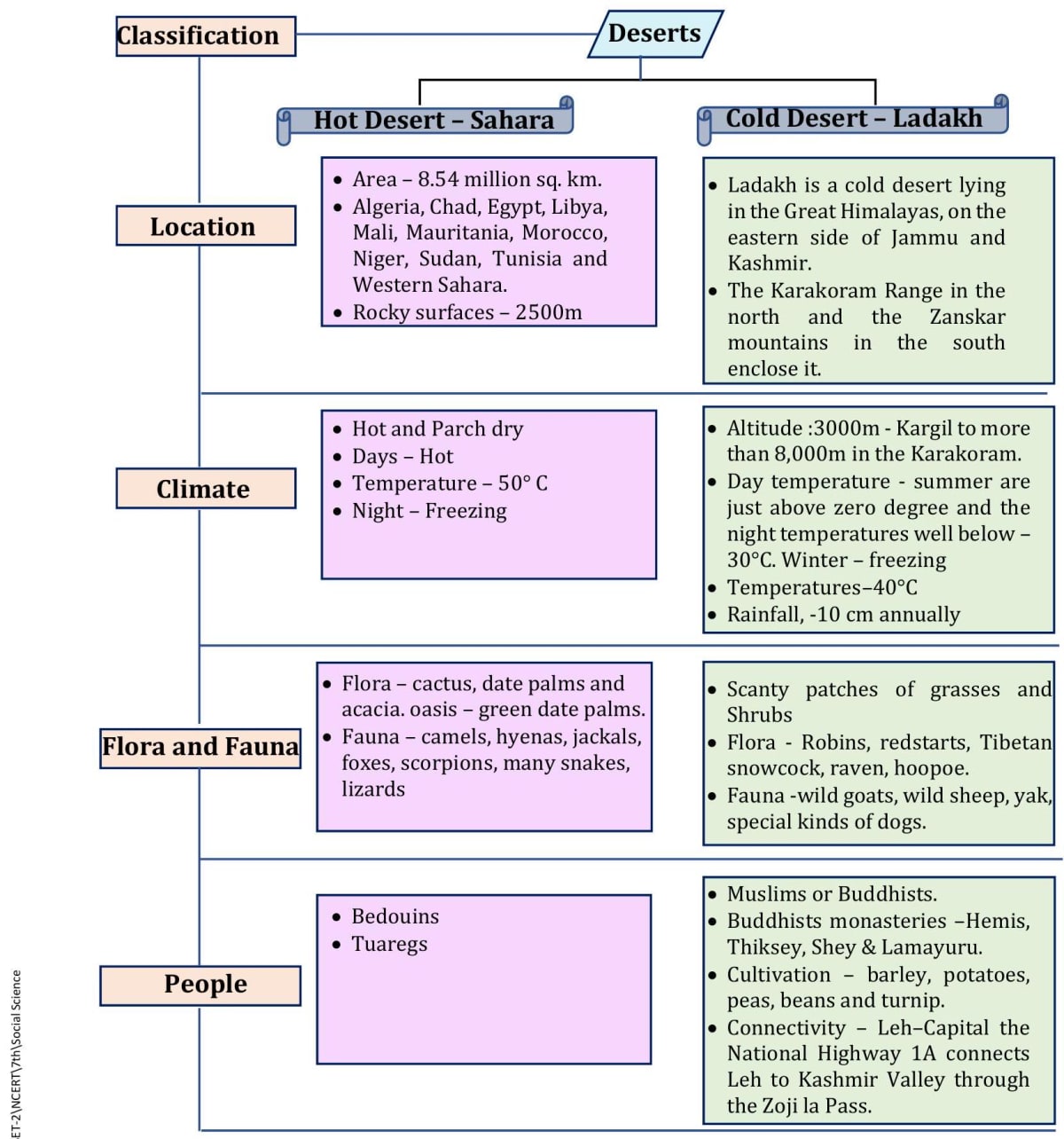
Related Article:-
Join ALLEN!
(Session 2026 - 27)
Choose class
Choose your goal
Preferred Mode
Choose State